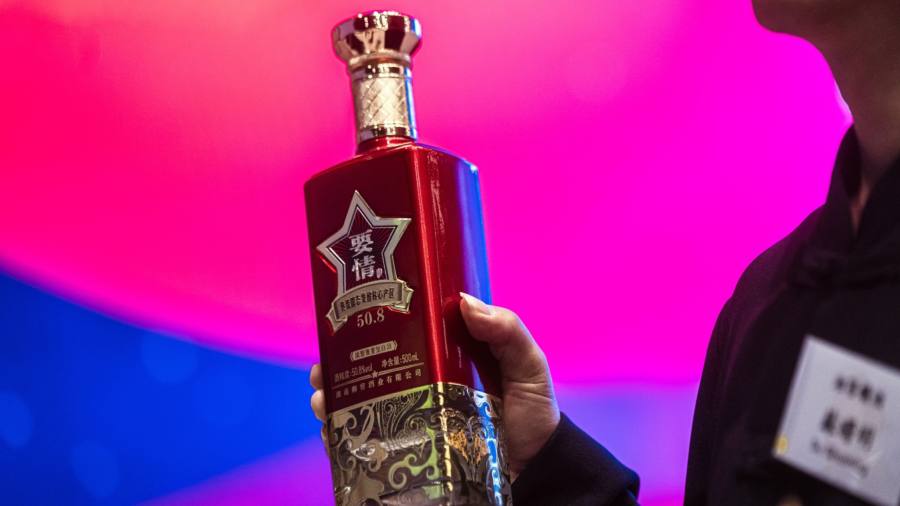Chinese initial public offerings have raised more than five times as much money as those in the US this year as a crop of fresh listings in the world’s biggest economy failed to appear after a dire 2022.
Rising interest rates, stubbornly high inflation and the recent turmoil in the US banking sector have dashed hopes of a recovery in companies floating on Wall Street.
European markets have also been moribund, leaving Asia — and particularly China — as the clear global leader in IPO markets this year, helped by an end to the tough pandemic restrictions and a new streamlined listings regime for the Shanghai and Shenzhen stock exchanges.
“It’s not so much that Asia has exploded, it’s just that the US and the rest of the world have died down so much that China and other markets end up accounting for a lot of activity,” said Avery Spear, an analyst at Renaissance Capital. “China has been somewhat resilient thanks to government involvement.”
The US’s poor performance is set against a lacklustre 2022. The number of US IPOs has plunged 40 per cent year on year in the four months to the end of April, with 56 offerings raising just over $3.8bn, data from Dealogic shows.
That compares with more than $12.3bn raised during the same period last year as financial markets were selling off, and the $130bn total in the first four months of the bull run of 2021.
“While there will be some activity, the idea that we’re going to have a quick snapback in the regular-way US new issue market has come and gone,” said Seth Rubin, head of US equity capital markets at Stifel.
He said the bulk of ECM activity in the next quarter is likely to be less risky deals, such as follow-on share sales and convertible bonds.
Rubin said investors had begun showing more interest in IPO candidates, but were in no rush to buy new listings given many already-listed groups were still trading at sharp discounts to their previous valuation.
China’s IPO market, in contrast, appears to be in relatively rude health.
Extensive policy support for offerings by companies in strategic sectors and recent reforms to hasten the pace of new listings have helped Chinese companies raise more than $19.5bn across nearly 80 deals, according to Dealogic.
That total is down about $4bn year on year but nonetheless accounts for about 53 per cent of the global total in 2023, putting China’s market head and shoulders above rival jurisdictions.
However, the flurry of activity in Shanghai and Shenzhen has not fed through to Hong Kong, where new listings have brought in less than $1.5bn so far and the average size of offerings has dropped almost a quarter compared with a year ago.
More than 45 per cent of Hong Kong’s fundraising total comes from a single deal: ZJLD, the first Chinese liquor maker to list offshore, whose $675mn share sale had been touted as the potential vanguard of a nascent revival in deal flow from mainland China.
In the event, shares in ZJLD ended their first session down almost 18 per cent on Thursday amid lacklustre demand, even after having priced at the bottom of their target range.
The latest figures paint a gloomy picture for Europe, where corporate offerings have raised £1.8bn so far this year, down 40 per cent on the first four months of 2022.
The UK has fared even worse, with six listings in 2023 raising just £90mn. In its first quarter trading update the London Stock Exchange Group for the first time chose not to include the latest figures for new issues and total money raised on its primary equity markets.
In the US, a strong start to the year for the S&P 500 had started to raise hopes that the US IPO market was close to reopening, until the collapse of Silicon Valley Bank in March prompted a fresh bout of volatility and renewed fears over an economic downturn.
“We thought we were getting there before SVB; it felt like we were building the momentum,” said a senior US banker, adding that recent gains for a few large stocks had been propping up the broader market, indicating there was little desire among investors to buy in to smaller or riskier companies. “The world is still confusing — the S&P is above 4100, we’re only down 13 or 14 per cent, but none of us feel like things are only 14 per cent lower than at the peak.”
Carve-outs from larger well-established companies have been one of the few areas of activity, with the impending listing of Johnson & Johnson’s consumer arm following similar deals by AIG and Intel last year. The J&J business, now known as Kenvue, is set to be the largest US listing since Rivian in November 2021.
The deal is being closely watched as a test of investor appetite, but its idiosyncratic nature — Kenvue is well-established, profitable, and J&J will continue to own more than 90 per cent of its shares — means it is not expected to encourage an immediate rush of followers.
“Investors are willing to do the work around high-quality companies, but they still have the leverage and are going to be very selective about what they buy and what they are willing to pay,” said Rubin. “Most investors don’t feel obligated to chase the new issue market right now.”
Read the full article here



